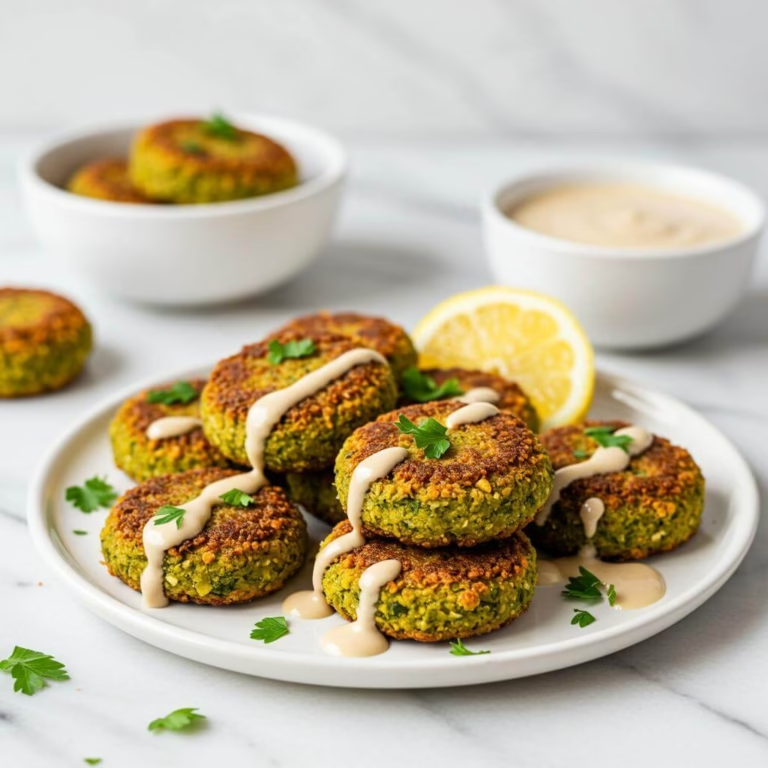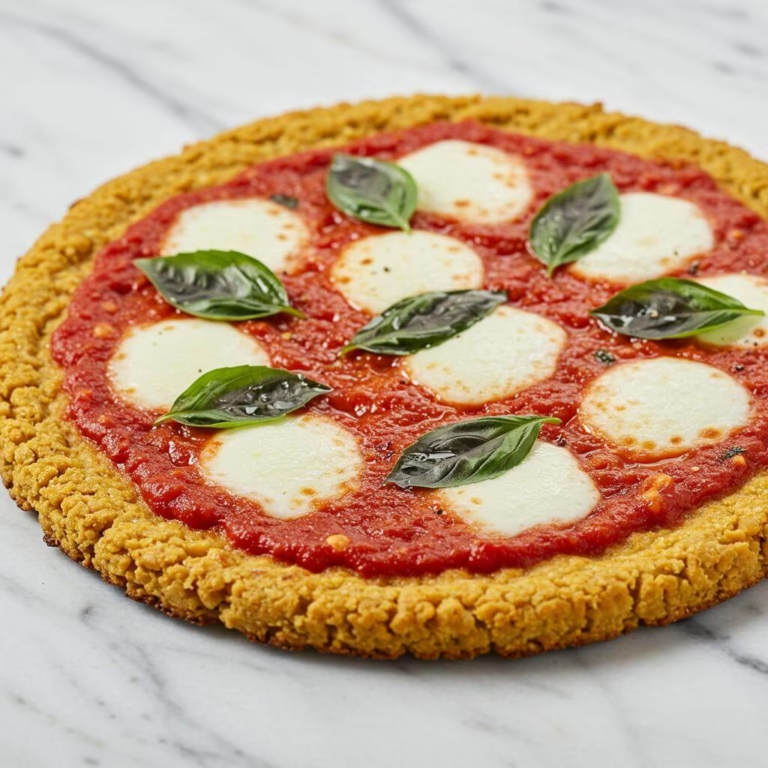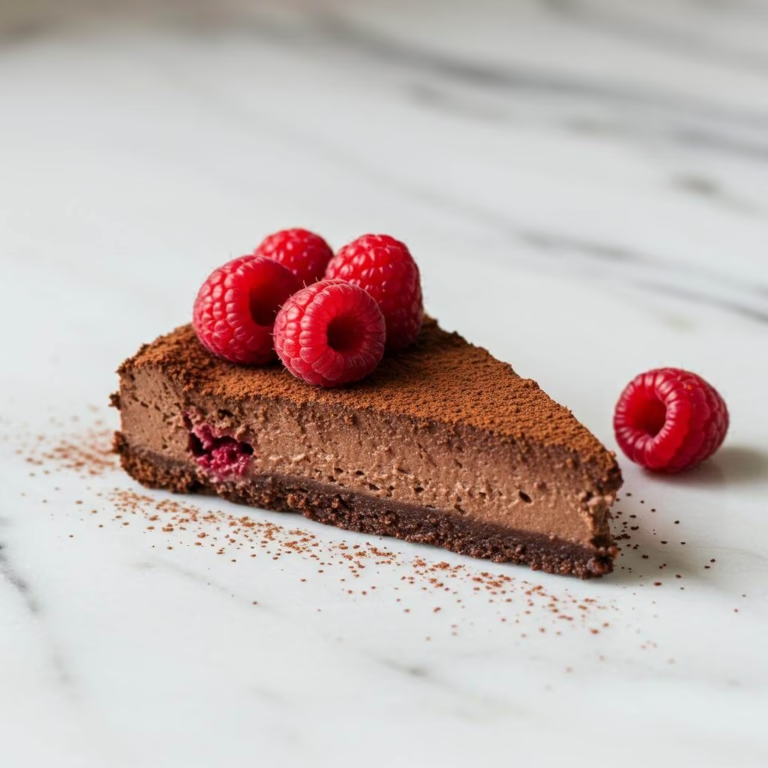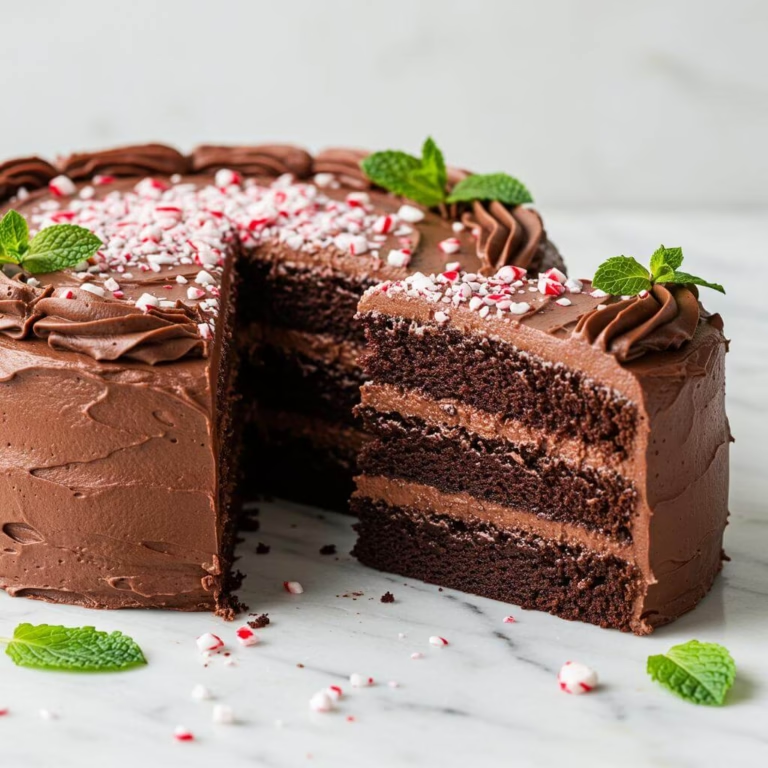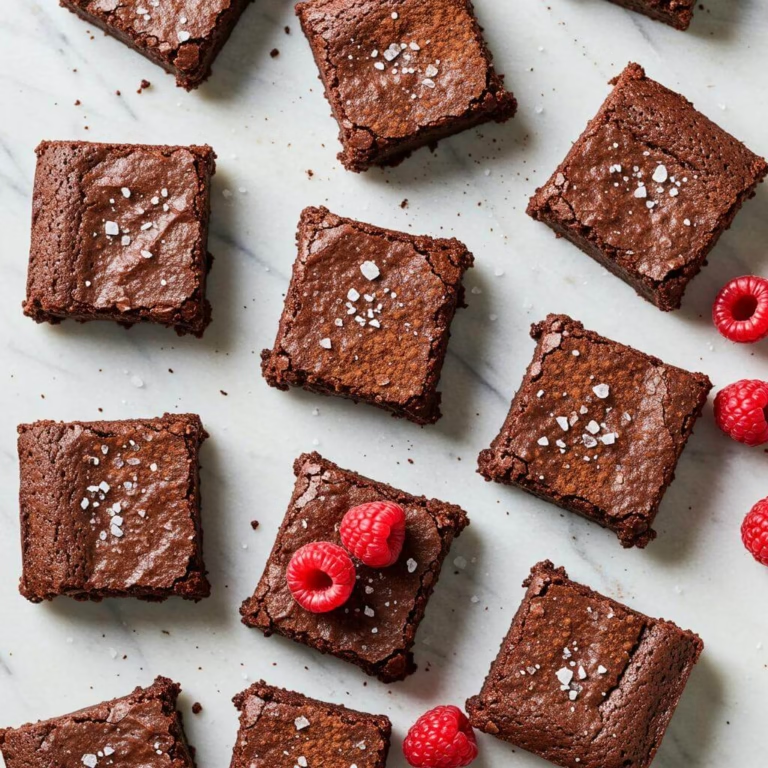I can’t see these beautiful mini cakes without being instantly transported back to a specific moment: sitting in the late afternoon sun by the Tower of London, camera slung around my neck, utterly exhausted but vibrating with the energy of a new city. It was my very first day in London, a whirlwind of sightseeing after a long, long flight. My tried-and-true post-jetlag strategy involves maximum movement and strategic eating, and after an early start fueled by good coffee and an incredible bircher bowl, I stumbled upon the tiered window display of a certain famous London eatery. It was a sugar wonderland, and I knew I couldn’t leave empty-handed. Among the meringues and colourful salads, one unassuming loaf caught my eye: a slice of what turned out to be an intriguing and sturdy lemon, polenta and pistachio cake.
That first taste was a revelation. The texture was unlike anything I’d had before – a delightful grit from the polenta against a tender crumb, the bright citrus cutting through the buttery richness. It was the perfect fuel for the rest of my epic walking day, which included wandering across bridges, climbing St Paul’s, and a mini food tour of Soho with a friend that involved hidden samples of smooth hot chocolate and decadent doughnuts. That trip was a delicious blur, really. From seeking out rich, fudgy flourless chocolate cake options to trying every interesting pastry I could find (when safe!), food was definitely a highlight.
Back home, the memory of that specific lemon polenta cake lingered. My travels often inspire my kitchen experiments, and I knew I had to try and recreate it. The challenge was adapting it to be something I could confidently say was the *best* version, perhaps even better than the one that sparked the idea! I wanted a gluten-free lemon polenta cake that was incredibly moist, bursting with citrus, and had that signature polenta texture without being dry or crumbly.
It wasn’t a one-and-done kind of bake, I’ll admit. There were trial runs, including one memorable (and slightly frustrating) attempt where they absolutely refused to come out of the tins neatly. But the process, messy as it sometimes was, was worth it. Each tweak brought me closer to that perfect bite. I thought about other favourite bakes, like my favourite gluten-free lemon poppyseed muffins or my go-to fluffy gluten-free banana bread, considering what makes them so consistently good – usually a combination of good fats, careful flour balances, and not overmixing. Applying those lessons to the gluten-free lemon polenta cake was key.
And finally, I cracked it. This gluten-free lemon polenta cake recipe is everything I dreamed of and more. It’s buttery, moist, and wonderfully tender, with just the right amount of gentle texture from the polenta and a lovely warmth from the ground pistachios. The bright, zesty flavour of the lemon polenta cake is amplified by a simple, tart glaze that sets beautifully. Whether you first tasted a lemon polenta cake on a memorable trip like I did, or you’re simply searching for an incredibly delicious and uniquely textured gluten-free bake, this is the recipe you need in your life. Seriously, get ready to fall in love with this gluten-free lemon polenta cake!
Tired of Gluten-Free Baking Guesswork?
Perfecting gluten-free treats like this delightful Lemon Polenta Cake can be rewarding, but sometimes tricky! If you’re looking to nail your gluten-free baking every time, we’ve got just the thing for you, fellow gluten-free friend!
Get Your FREE ‘Gluten-Free Baking Substitutions Cheat Sheet’ Now!
- ✔ Say goodbye to crumbly or dense results with foolproof ingredient swaps.
- ✔ Instantly know the best gluten-free flour alternatives for any recipe – from cakes to breads.
- ✔ Save time and ingredients by avoiding common gluten-free baking mistakes.
- ✔ Bake with confidence and create consistently delicious gluten-free masterpieces!
This indispensable guide will empower you to adapt your favorite recipes and explore new ones without fear. Let’s make your gluten-free baking journey joyful and stress-free!
We respect your inbox! We’ll only send you helpful gluten-free tips, recipes, and updates. No spam, ever.
Why This Lemon Polenta Cake Recipe Works (It’s Gluten-Free!)
Prepare to be amazed! This isn’t just *any* lemon polenta cake; it’s a gluten-free masterpiece that defies expectations. The secret to this recipe’s incredible success lies in the fascinating way the ingredients work together, creating a cake that’s even better than traditional versions.
Here’s where the magic happens: we use a brilliant combination of gluten-free powerhouses. Instead of relying on wheat flour for structure, this lemon polenta cake leans on ground almonds and ground pistachios. What’s truly remarkable about this combination? They provide a rich, tender crumb and nutty flavour, while their natural oils contribute significant moisture, preventing that common gluten-free dryness. It’s a structural success story built on nuts!
The star texture player in this lemon polenta cake is, of course, the fine polenta. While it adds that signature delightful grittiness, it also absorbs moisture beautifully during baking and then holds onto it, ensuring the cake remains incredibly moist. This unique texture sets a great lemon polenta cake apart, and the polenta here delivers perfectly.
Adding to the moisture mastery is the Greek yogurt. This ingredient is a secret weapon in gluten-free baking, bringing tanginess and an extra layer of moistness and tenderness without making the batter heavy. It works in synergy with the fats from the nuts and butter to create an exceptionally soft crumb for this lemon polenta cake.
The flavour profile is intensely bright and nutty. The vibrant lemon zest and juice cut through the richness of the butter and nuts, while the ground pistachios add their distinct, subtle flavour that complements the lemon and polenta beautifully. This gluten-free lemon polenta cake doesn’t just substitute ingredients; it enhances the overall taste experience.
The fascinating thing about gluten-free baking, as shown in this , is that you can achieve and even surpass the texture and moisture of traditional cakes by understanding how alternative ingredients function. There’s no need for complex flour blends when you harness the natural properties of ingredients like polenta, almonds, and pistachios.
This recipe proves that a gluten-free lemon polenta cake can be buttery, moist, and wonderfully textured, completely dispelling the myth that gluten-free means dry or crumbly. It’s a confidence-building bake that shows you the incredible potential of gluten-free ingredients when used thoughtfully. Get ready to bake the perfect lemon polenta cake!
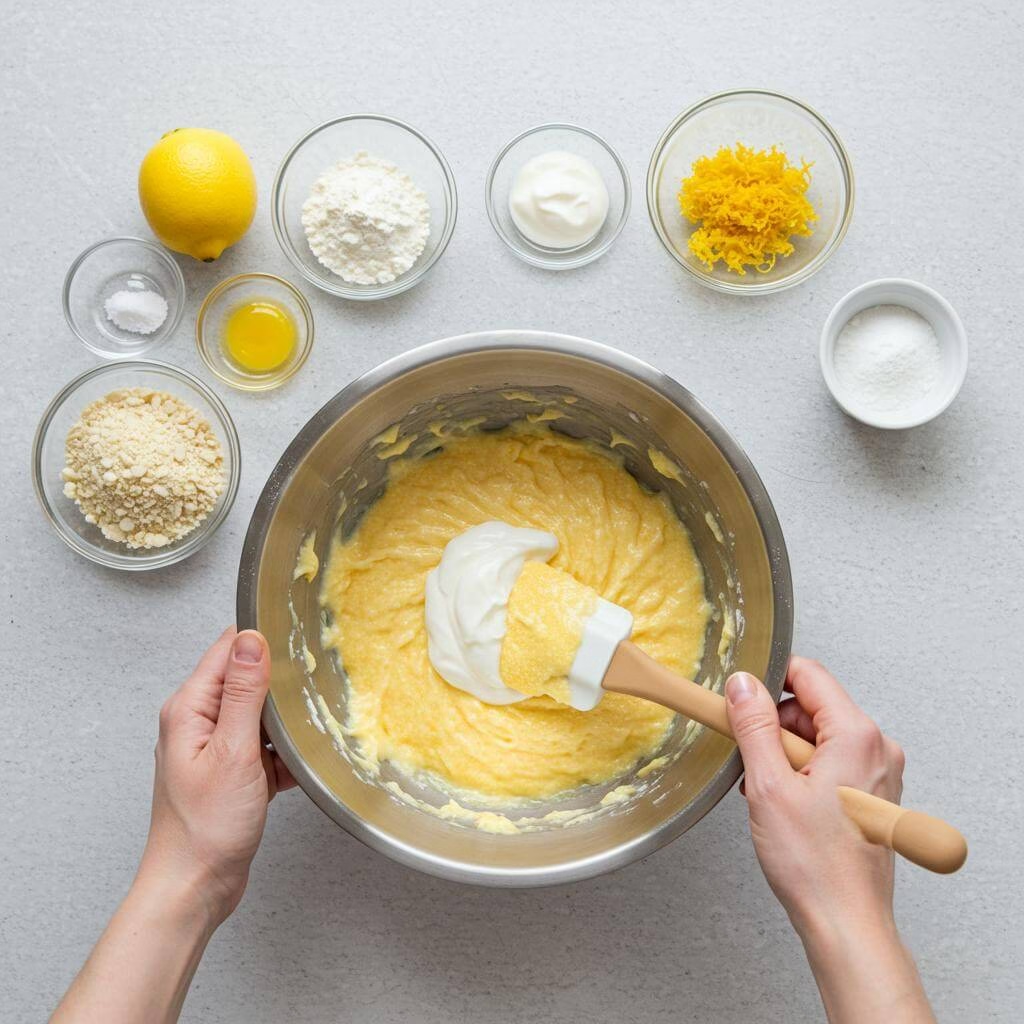
Making This Recipe Your Own
These gluten-free lemon, polenta, and pistachio cakes are wonderfully moist and flavorful as is, but feel free to make them your own! Whether you need a quick swap or want to get creative with new flavors, here are some ideas to help you adapt this delightful gluten-free recipe.
Easy Swaps
Short on an ingredient? No problem! Here are some simple swaps that will keep your lemon polenta cake delicious and gluten-free.
- No Ground Pistachios? You can swap the ground pistachios for an equal amount (70g) of extra ground almonds. Your lemon polenta cake will have a slightly less unique nutty flavor, but it will still be wonderfully moist and have that signature polenta texture. Easy peasy!
- Need a Ground Almond Alternative? If ground almonds aren’t an option (or you used them for the pistachio swap!), you can use fine gluten-free oat flour or finely ground sunflower seeds (pulsed in a food processor) in their place. Use the same weight (100g). This might slightly change the crumb structure compared to using almonds, but it works well in a lemon polenta cake recipe like this.
- Out of Greek Yogurt? A fantastic swap for the greek yogurt is an equal amount (2 tablespoons) of sour cream or even a plain dairy-free yogurt. This adds moisture and a slight tang, crucial for the cake’s texture. Ensure your alternative yogurt is thick!
- Don’t Have Caster Sugar? Regular granulated sugar works just fine instead of caster sugar! The slightly larger crystals might mean you need to cream the butter and sugar a tiny bit longer to dissolve them, but the final lemon polenta cake will be just as sweet.
- Dairy-Free Butter Swap: To make these cakes **dairy-free** (along with the yogurt swap), substitute the unsalted butter with an equal amount (220g) of a good quality dairy-free baking stick or solid coconut oil. Ensure it’s at room temperature for creaming.
Creative Variations
Get creative with your gluten-free baking! These variations offer exciting new directions for your next lemon polenta cake.
- Orange & Cardamom Delight: Swap the lemon zest and juice for the zest of 2 oranges and 3-4 tablespoons of orange juice. Add 1/2 teaspoon of ground cardamom to the dry ingredients. This creates a warm, fragrant alternative to the classic lemon polenta cake.
- Berry Burst: Gently fold 1/2 cup of fresh or frozen (do not thaw) small berries like blueberries or raspberries into the batter just before dividing it into the tins. The berries add bursts of color and tartness that pair beautifully with the lemon flavor in this polenta cake.
- Chocolate Chips & Orange Zest: Add 1/2 cup of dairy-free chocolate chips to the batter along with the lemon zest (or swap for orange zest!). Chocolate and citrus are a classic pairing that works wonderfully in this moist cake base.
- Rosewater & Pistachio: For a more delicate, floral note, add 1-2 teaspoons of culinary rosewater to the batter with the lemon juice (reduce lemon juice slightly if adding 2 tsp rosewater). This enhances the pistachio flavor and gives your polenta cake an elegant touch.
- Larger Cake Version: Don’t have mini loaf tins? You can bake this as one large loaf cake! Use a standard 9×5 inch loaf pan, greased and lined. The baking time will be longer, likely 45-60 minutes, or until a skewer inserted into the center comes out clean. This makes slicing and serving a lovely lemon polenta cake even easier for a crowd.
- Add a Nut Crunch Topping: Before baking, sprinkle the top of the batter in each tin with a mix of chopped pistachios and a little coarse sugar for an extra crunchy topping on your lemon polenta cake.
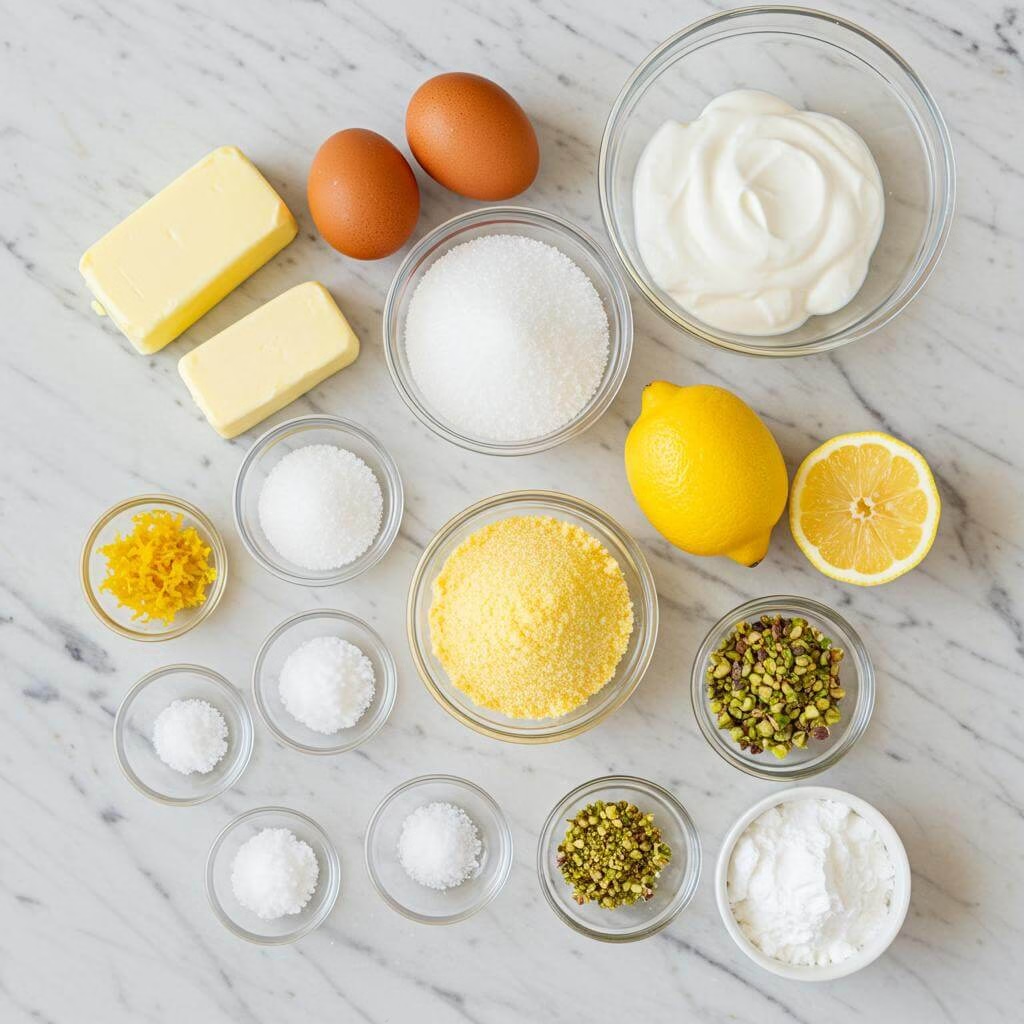
Tips for Perfect Results
- Embrace Room Temperature: Your Secret WeaponThis is non-negotiable for the perfect lemon polenta cake. Ensure your butter, eggs, and especially the Greek yogurt are at room temperature before you start. Cold ingredients don’t emulsify properly, leading to a lumpy batter and a less tender crumb. Warmed ingredients create a smooth, homogeneous mixture that traps air beautifully during creaming, which is vital for lightness in a naturally gluten-free cake.
- Master the Creaming StageDon’t just combine the butter and sugar; truly *cream* them. Use a stand mixer or electric hand mixer on medium-high speed until the mixture is significantly lighter in color and fluffy. This process incorporates crucial air bubbles that provide lift and structure, compensating for the absence of gluten. It should take several minutes – patience here pays off big time for your lemon polenta cake naturally.
- Gentle Folding is Key (Even Without Gluten!)Once you add the ground nuts, polenta, baking powder, and salt, switch to the lowest speed on your mixer or fold very gently by hand. Overmixing at this stage can develop toughness in the nut flours and lead to a dry, crumbly texture, which is the opposite of what we want in this moist lemon polenta cake. Mix just until the dry ingredients are *just* incorporated.
- Nail the Tin Prep: Avoid Sticky SituationsTrust me, this saves heartbreak! The recipe author learned this the hard way, and so did I! For mini loaf tins, simply greasing isn’t enough with gluten-free batters, which can be more fragile. Always grease the tins generously *and* line the base and sides (if possible, or at least the base) with parchment paper. This ensures your beautiful gluten-free lemon polenta cake loaves release cleanly every single time.
- Perfect the Glaze ConsistencyThe glaze isn’t just for looks; it adds a vital tangy counterpoint! The secret is getting the consistency just right – thick enough to dollop and spread, but thin enough to drip enticingly down the sides. Start with less liquid than you think you need (2 tablespoons of lemon juice) and add the third tablespoon only if absolutely necessary, a teaspoon at a time, mixing vigorously until smooth. It should be a thick, pourable syrup, not a thin liquid.
- The Skewer Test Has NuancesWhen checking for doneness, insert a skewer into the centre of the cake. It should come out *clean*, but not necessarily with dry crumbs attached. A few moist crumbs clinging indicate the cake is baked through but still wonderfully moist inside. If it comes out wet with batter, it needs more time. If it comes out completely dry, you might be veering towards over-baking.
- Why Resting Matters After BakingDon’t rush to turn the cakes out immediately! Leaving them in the warm tins for 15 minutes allows the structure, which is more delicate without gluten, to set properly. Transferring them immediately can cause them to break. Resting on a wire rack afterwards ensures air circulation, preventing the bottoms from becoming steamy or soggy.
Common Mistakes to Avoid
Steer clear of these pitfalls for guaranteed success with your lemon polenta cake naturally:
- Overmixing the Batter: This is a common error in gluten-free baking. Mixing too vigorously or for too long after adding the dry ingredients (polenta, nuts, baking powder) can result in a dense, tough, or crumbly texture instead of a moist one. Prevention: Use a spatula or the lowest mixer speed and mix *just* until no streaks of dry ingredients remain.
- Poor Tin Preparation: Assuming greasing alone is sufficient for these gluten-free cakes will likely lead to them sticking and breaking when you try to remove them. Prevention: Always follow the expert advice: grease the tins thoroughly *and* line the base (and sides if possible) with parchment paper.
- Incorrect Glaze Thickness: Making the glaze too thin will result in a watery finish that runs off instead of coating the cake beautifully. Making it too thick makes it hard to spread and won’t give the desired drip effect. Prevention: Mix the icing sugar with the lemon juice gradually, starting with the minimum amount, until you achieve a thick but pourable consistency, testing it on a corner of a cooling cake if unsure.
Common Mistakes to Avoid
Making a delicious gluten-free lemon polenta cake is incredibly rewarding, but like any baking, there are a few common pitfalls that can lead to less-than-perfect results. Don’t worry, we’ve got the tips to help you navigate them and achieve that perfectly moist, nutty, and naturally gluten-free treat!
Sticking to the Tins
The Problem: You’ve baked beautiful mini lemon polenta cakes, but when you try to get them out of the tins, they stick and break apart. This is incredibly frustrating!
Why it happens: Gluten-free batters, like this lovely lemon polenta cake naturally, often lack the strong elastic structure that gluten provides in traditional cakes. This means they don’t hold together as robustly when stressed during removal. Combined with alternative flours like polenta and ground nuts, which can sometimes be prone to sticking, improper tin preparation is a recipe for disaster.
Prevention: The author specifically highlighted this issue! Don’t rely on just greasing and flouring. For these mini loaves, it’s essential to grease AND line your tins thoroughly. Cut parchment paper strips to fit the bases, and ideally, create ‘slings’ that also go up the sides, allowing you to easily lift the cakes out once cooled slightly.
Pro Tip: Even with lining, give the parchment and the exposed tin sides a light grease too. This double layer of protection ensures your beautiful lemon polenta cake releases perfectly every time. If using silicone mini loaf pans, grease them thoroughly despite their non-stick reputation.
Over-Baking Leads to Dry Cakes
The Problem: Your beautiful lemon polenta cake comes out looking golden, but when you slice into it, it’s dry and crumbly instead of wonderfully moist.
Why it happens: Gluten-free ingredients tend to dry out faster than their wheat counterparts when exposed to heat. Ingredients like polenta can also absorb moisture during baking. Over-baking, even by a few minutes, evaporates the precious moisture contributed by the butter, eggs, and yogurt in this recipe, resulting in a dry texture.
Prevention: Ovens can vary wildly, so don’t rely solely on the time range. Start checking your cakes at the lower end of the baking time (around 20 minutes). Use the skewer test – a skewer inserted into the center should come out clean or with just a few moist crumbs attached (not wet batter!). Also, look for visual cues: the edges should be slightly pulled away from the tin, and the top should spring back gently when lightly touched.
Pro Tip: An oven thermometer is a baker’s best friend! It ensures your oven is actually at the correct temperature (180°C / 350°F). If you’re ever in doubt, it’s better to under-bake slightly than over-bake; residual heat will finish cooking the cake as it cools on the wire rack. This helps keep your lemon polenta cake naturally moist.
Recovery: If you suspect your cakes are a little dry after baking, gently brush the warm cakes with a simple syrup made from equal parts sugar and lemon juice, or even just a little extra lemon juice from the recipe components. The glaze will also add much-needed moisture.
Over-Mixing the Batter
The Problem: Instead of a tender, slightly textured crumb, your lemon polenta cake feels dense or heavy.
Why it happens: While you don’t have to worry about developing gluten in this naturally gluten-free lemon polenta cake, you can still overwork the batter, especially after adding the dry ingredients (ground nuts, polenta, baking powder, salt). Over-mixing can compress the batter, knock out air incorporated in earlier steps, and potentially affect how the leavening agent (baking powder) works.
Prevention: Pay close attention to the instructions when adding the dry ingredients and liquids (lemon juice). The recipe specifically says to “mix gently for a few seconds” after adding nuts, and “fold in gently” the polenta mixture, and then “mix to just combine” the lemon juice. Use a spatula or mix on the lowest speed of your mixer *just* until no dry streaks remain. A few small lumps are fine!
Pro Tip: For adding the polenta mixture and lemon juice, switching to a rubber spatula and folding by hand is the best way to avoid over-mixing. Use a gentle motion to incorporate ingredients without beating the air out of the batter. This care helps ensure a light and lovely lemon polenta cake.
You’ve got this! By avoiding these common mistakes, you’re well on your way to baking perfect, buttery, and moist gluten-free lemon polenta cakes.
Common Mistakes to Avoid
Making a delicious gluten-free lemon polenta cake is incredibly rewarding, but like any baking, there are a few common pitfalls that can lead to less-than-perfect results. Don’t worry, we’ve got the tips to help you navigate them and achieve that perfectly moist, nutty, and naturally gluten-free treat!
Sticking to the Tins
The Problem: You’ve baked beautiful mini lemon polenta cakes, but when you try to get them out of the tins, they stick and break apart. This is incredibly frustrating!
Why it happens: Gluten-free batters, like this lovely lemon polenta cake naturally, often lack the strong elastic structure that gluten provides in traditional cakes. This means they don’t hold together as robustly when stressed during removal. Combined with alternative flours like polenta and ground nuts, which can sometimes be prone to sticking, improper tin preparation is a recipe for disaster.
Prevention: The author specifically highlighted this issue! Don’t rely on just greasing and flouring. For these mini loaves, it’s essential to grease AND line your tins thoroughly. Cut parchment paper strips to fit the bases, and ideally, create ‘slings’ that also go up the sides, allowing you to easily lift the cakes out once cooled slightly.
Pro Tip: Even with lining, give the parchment and the exposed tin sides a light grease too. This double layer of protection ensures your beautiful lemon polenta cake releases perfectly every time. If using silicone mini loaf pans, grease them thoroughly despite their non-stick reputation.
Over-Baking Leads to Dry Cakes
The Problem: Your beautiful lemon polenta cake comes out looking golden, but when you slice into it, it’s dry and crumbly instead of wonderfully moist.
Why it happens: Gluten-free ingredients tend to dry out faster than their wheat counterparts when exposed to heat. Ingredients like polenta can also absorb moisture during baking. Over-baking, even by a few minutes, evaporates the precious moisture contributed by the butter, eggs, and yogurt in this recipe, resulting in a dry texture.
Prevention: Ovens can vary wildly, so don’t rely solely on the time range. Start checking your cakes at the lower end of the baking time (around 20 minutes). Use the skewer test – a skewer inserted into the center should come out clean or with just a few moist crumbs attached (not wet batter!). Also, look for visual cues: the edges should be slightly pulled away from the tin, and the top should spring back gently when lightly touched.
Pro Tip: An oven thermometer is a baker’s best friend! It ensures your oven is actually at the correct temperature (180°C / 350°F). If you’re ever in doubt, it’s better to under-bake slightly than over-bake; residual heat will finish cooking the cake as it cools on the wire rack. This helps keep your lemon polenta cake naturally moist.
Recovery: If you suspect your cakes are a little dry after baking, gently brush the warm cakes with a simple syrup made from equal parts sugar and lemon juice, or even just a little extra lemon juice from the recipe components. The glaze will also add much-needed moisture.
Over-Mixing the Batter
The Problem: Instead of a tender, slightly textured crumb, your lemon polenta cake feels dense or heavy.
Why it happens: While you don’t have to worry about developing gluten in this naturally gluten-free lemon polenta cake, you can still overwork the batter, especially after adding the dry ingredients (ground nuts, polenta, baking powder, salt). Over-mixing can compress the batter, knock out air incorporated in earlier steps, and potentially affect how the leavening agent (baking powder) works.
Prevention: Pay close attention to the instructions when adding the dry ingredients and liquids (lemon juice). The recipe specifically says to “mix gently for a few seconds” after adding nuts, and “fold in gently” the polenta mixture, and then “mix to just combine” the lemon juice. Use a spatula or mix on the lowest speed of your mixer *just* until no dry streaks remain. A few small lumps are fine!
Pro Tip: For adding the polenta mixture and lemon juice, switching to a rubber spatula and folding by hand is the best way to avoid over-mixing. Use a gentle motion to incorporate ingredients without beating the air out of the batter. This care helps ensure a light and lovely lemon polenta cake.
You’ve got this! By avoiding these common mistakes, you’re well on your way to baking perfect, buttery, and moist gluten-free lemon polenta cakes.
“`html
Essential Equipment for This Recipe
To prepare this delicious recipe, you’ll need the following kitchen tools:
- Mixing Bowls – A set of sturdy mixing bowls is essential for combining wet and dry ingredients.
Find Mixing Bowls on Amazon - Measuring Cups and Spoons – Accurate measurements are key to baking success!
Find Measuring Cups and Spoons on Amazon - Baking Sheets – Perfect for baking cookies, roasting vegetables, and more.
Find Baking Sheets on Amazon - Whisks – For incorporating air and blending ingredients smoothly.
Find Whisks on Amazon - Spatulas – Flexible spatulas are great for scraping bowls clean and folding ingredients.
Find Spatulas on Amazon - Food Processors – Makes prepping ingredients a breeze
Find Food Processors on Amazon - Saucepans – Useful for cooking sauces and other liquid components.
Find Saucepans on Amazon - Chef’s Knives – A good quality knife is essential.
Find Chef’s Knives on Amazon - Cutting Boards – Protect your countertops.
Find Cutting Boards on Amazon
“`
“`html
Frequently Asked Questions
Can I make this gluten-free lemon polenta cake in a standard loaf pan instead of mini ones?
Great question! This recipe was specifically developed for mini loaf tins, which helps them bake quickly and evenly, and gives you those lovely individual servings just like the inspiration cake! Baking them this way also helps prevent the bottom from getting soggy.
While you *could* try adapting it for a standard size loaf pan, you would definitely need to significantly increase the baking time (likely 45-60 minutes or even longer) and keep a very close eye on it. The texture and rise might also differ slightly. If you do try a larger pan, make sure to grease and line it extremely well. But for the best results that replicate the recipe developer’s success, sticking with the mini tins is recommended!
My batter looked a little curdled after adding the eggs and yogurt. Did I do something wrong?
Absolutely not! This is totally normal and nothing to worry about. Because we’re adding wet ingredients (the eggs and yogurt) to a butter and sugar mixture, the batter can sometimes look a bit broken or curdled at that stage.
Just keep mixing gently as instructed, and once you add the dry ingredients (ground nuts, polenta, etc.), it will come together into the correct consistency. You’ve got this – it’s just part of the process with this rich, moist batter!
Is there a specific type of polenta I need for this lemon polenta cake recipe?
Yes, using the right polenta is key for that signature texture! This recipe calls for fine polenta (sometimes labeled instant or quick-cook polenta, but make sure it says ‘fine’).
Using a medium or coarse grind polenta will result in a much more prominent, almost gritty texture, rather than the delicate, slightly sandy texture we’re aiming for in this delicious lemon polenta cake. Double-check the package to ensure you have ‘fine’ polenta for the best crumb.
Help! My lemon polenta cakes stuck to the tins, even with lining. What can I do next time?
Oh, that can be frustrating! It’s definitely a common challenge with rich, moist cakes like this, especially gluten-free ones where there’s no elastic gluten network to help them release. As mentioned in the post, this happened during recipe testing!
The winning technique is generously greasing the tins first, then lining the base AND sides with baking paper, leaving some paper hanging over the edges as ‘handles’. We found just greasing or just lining the base wasn’t quite enough. Using a non-stick baking spray *in addition* to the paper lining can also offer extra insurance. Make sure you’re letting them cool in the tins for the recommended 15 minutes before attempting to remove them – this allows them to firm up just enough to handle.
What if I don’t have pistachios or have a nut allergy? Can I make substitutions?
Yes, you can definitely adapt this! The pistachios add a lovely flavour and color, but the cake will still be delicious without them.
If you can’t have pistachios but can have other nuts, you could simply replace the ground pistachios with an equal weight (70g) of additional ground almonds. The flavour profile will be slightly different but still wonderfully nutty and moist. If you need a completely nut-free option, you could try replacing the total amount of ground almonds and pistachios (170g) with a gluten-free flour blend designed for cakes, or perhaps a blend of GF flour and fine ground sunflower seeds for some texture. Be aware that replacing all the nuts will change the texture and moisture of the lemon polenta cake pretty significantly, so you might need to adjust liquid slightly.
My lemon glaze is too runny (or too thick). How do I get the perfect consistency?
Getting the glaze just right can sometimes take a tiny bit of tweaking! The goal is a thick but pourable consistency that drips beautifully down the sides.
If your glaze is too thick: Add just 1/2 a teaspoon of lemon juice at a time, whisking well after each addition, until it loosens up to your desired consistency. It’s much easier to add liquid than remove it, so go slowly!
If your glaze is too runny: Gradually whisk in a tablespoon or two of extra icing sugar until it thickens up.
Test it on the back of a spoon or a small corner of one cake before glazing them all!
How long will these gluten-free lemon polenta cakes stay fresh, and can I freeze them?
These moist cakes keep really well! Store them in an airtight container at room temperature for 3-4 days. For best freshness beyond that, store them in the refrigerator, where they’ll last for about a week.
Yes, they freeze beautifully! For freezing, it’s best to freeze them *before* glazing and sprinkling with pistachios. Wrap each cooled, unglazed mini cake tightly in plastic wrap, then place them in a freezer-safe bag or container. They can be frozen for up to 3 months. Thaw them at room temperature, then prepare and add the glaze just before serving to get that perfect finish on your delicious lemon polenta cake.
Why is this called a ‘naturally’ gluten-free recipe? Is it safe for celiac disease?
This recipe is called ‘naturally’ gluten-free because it doesn’t use any specially formulated gluten-free flour blends. Instead, the primary dry structure comes from ingredients that are inherently without gluten: ground almonds, ground pistachios, and fine polenta.
For it to be strictly safe for individuals with celiac disease, you need to ensure that all your ingredients are certified gluten-free to avoid cross-contamination. This includes checking labels on things like baking powder, butter, yogurt, icing sugar, and especially the polenta and nuts/ground nuts, as they can sometimes be processed in facilities that also handle gluten. Always check packaging or choose certified brands if preparing for someone with celiac disease.
“`
Gluten-Free Pistachio and Polenta Cake
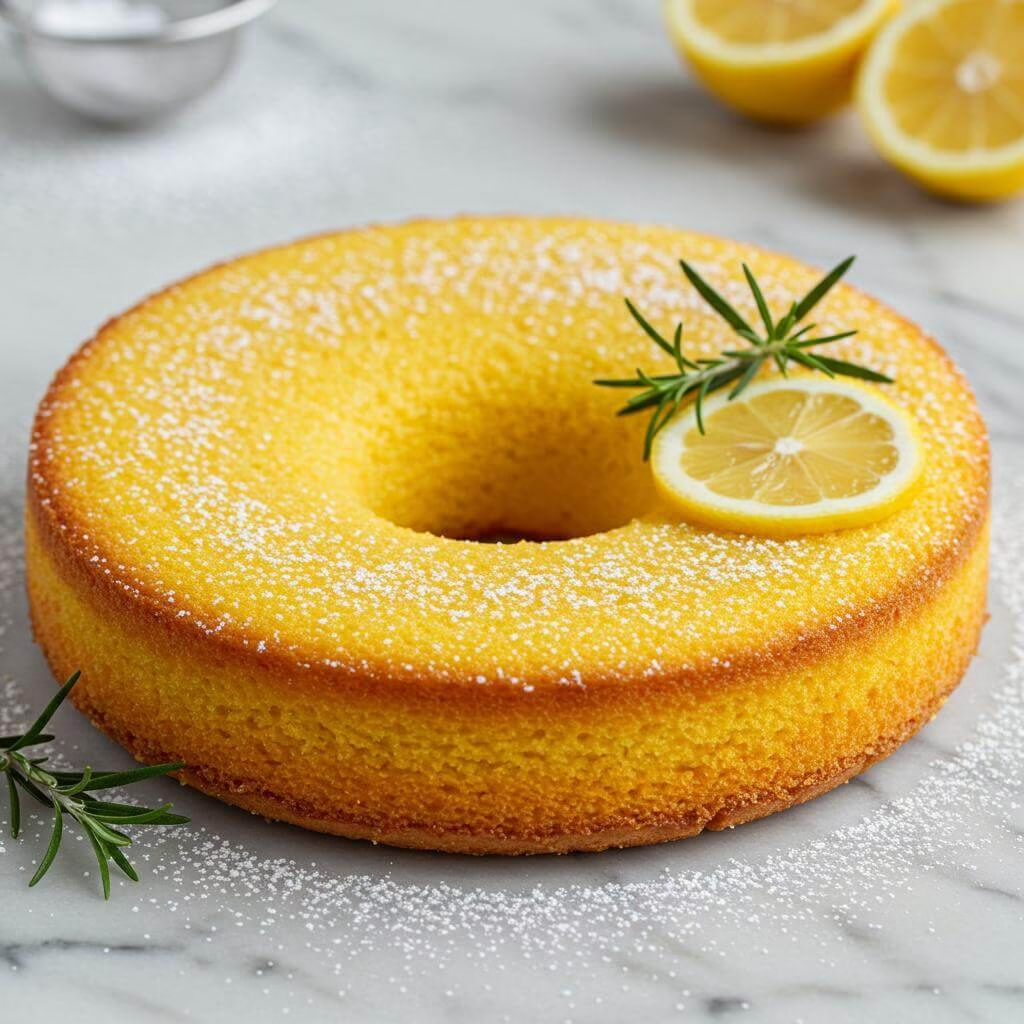
Gluten-Free Pistachio and Polenta Cake
This gluten-free lemon polenta cake recipe is buttery, moist, and wonderfully tender, with just the right amount of gentle texture from the polenta and a lovely warmth from the ground pistachios. The bright, zesty flavour is amplified by a simple, tart glaze.
Ingredients
8
- 220 g unsalted butter, softened
- 220 g caster sugar
- 3 large eggs, room temperature
- 2 tablespoons greek yogurt
- 100 g ground almonds
- 70 g ground pistachios
- 150 g fine polenta (cornmeal)
- 1 teaspoon baking powder
- 1 pinch salt
- Zest of 2 lemons
- 3 tablespoons fresh lemon juice (from 1/2 – 1 lemon)
- For the Glaze: 1 1/2 cups icing sugar (powdered sugar)
- 2-3 tablespoons fresh lemon juice (for glaze)
- Approx. 2 tablespoons coarsely chopped pistachios (for garnish)
Equipment
- Eight mini loaf tins
- Baking paper (parchment paper)
- Stand mixer with paddle (or hand mixer & large bowl)
- Grater (for lemon zest)
- Measuring cups and spoons
- Ice cream scoop (optional, for dividing batter)
- Small offset spatula (or spoon, for smoothing)
- Skewer (for testing doneness)
- Wire cooling rack
- Small bowl and whisk (for glaze)
Instructions
Preheat your oven to 180°C (350°F).
Prepare your pans: Generously grease eight mini loaf tins and line the base of each tin with a strip of baking paper, letting it overhang slightly to create ‘handles’.
In the bowl of a stand mixer with the paddle attachment (or using a hand mixer and large bowl), beat the softened unsalted butter and caster sugar together until light, pale, and fluffy ().
Add the eggs one at a time, beating well after each addition until fully incorporated. Stir in the Greek yogurt until just combined (the batter may look curdled, this is normal).
Add the ground almonds, ground pistachios, fine polenta, baking powder, and salt to the bowl. Gently fold these dry ingredients into the wet mixture until just combined. Do not overmix.
Grate the zest of both lemons directly into the bowl. Add 3 tablespoons of fresh lemon juice. Mix gently until just incorporated.
Divide the batter evenly among the prepared mini loaf tins. An ice cream scoop can be helpful here. Smooth the surface of the batter in each tin.
Place the tins in the preheated oven. Bake for 20-25 minutes. . They are ready when golden, firm, and a skewer inserted into the center comes out clean.
Remove cakes from the oven and let them cool in their tins for . Then, use the baking paper ‘handles’ to lift them out onto a wire cooling rack to cool completely.
While cakes cool, make the glaze: In a small bowl, whisk together the icing sugar and 2-3 tablespoons of fresh lemon juice until thick and smooth. Adjust consistency with more juice (if too thick) or icing sugar (if too thin).
Once cakes are completely cool, dollop a generous spoonful of glaze onto each cake. Use a knife or small offset spatula to encourage it to spread and drip down the sides.
While the glaze is still wet, sprinkle extra coarsely chopped pistachios over the top of each cake. Let the glaze set before serving.
Recipe Notes
- Room Temperature Ingredients: Ensure butter and eggs are at room temperature for best emulsion and texture.
- Do Not Overmix: Once dry ingredients are added, mix until just combined to keep the cake tender.
- Cool Completely: Allow cakes to cool fully before glazing to prevent the glaze from melting.
- Polenta Type: Use *fine* polenta for the best cake texture. Medium or coarse polenta will result in a grittier cake.
- Nut Alternatives: Substitute ground almonds and pistachios (170g total) with a gluten-free cake flour blend plus ground sunflower seeds for texture if needed.
- Dairy-Free Option: Use dairy-free stick butter and a thick dairy-free yogurt (e.g., coconut).
- Chocolate Variation: Stir 50g of finely chopped gluten-free white chocolate or dark chocolate chips into the batter.
- Berry Variation: Gently fold in 1/2 cup of fresh blueberries or raspberries.
- Spice Variation: Add 1/2 teaspoon of ground cardamom or ginger with the dry ingredients.

